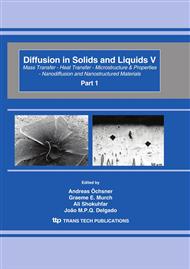p.1408
p.1414
p.1420
p.1426
p.1432
p.1439
p.1445
p.1451
p.1461
Natural Convection in Vertical Channels with Porous Media and Adiabatic Extensions
Abstract:
A numerical investigation on natural convection in air in a vertical heated channel, partially filled with porous medium, with adiabatic extensions downward and collinear the heated plates is accomplished. The fluid flow is assumed two-dimensional, laminar, steady state and incompressible. The porous material is considered as homogeneous and isotropic and the Brinkman-Forchheimer-extended Darcy model is considered. A finite-extension computational domain is employed to simulate the free-stream condition and allows to account for the diffusive effects and the numerical results are obtained using the finite volume method by FLUENT. Results in terms of wall temperature profiles are presented to evaluate the effects of the main thermal and geometrical parameters. The adiabatic extensions determine a wall temperature decrease and wall temperature decreases increasing Darcy number. In full filled heated channels wall temperature presents a significant increase for Darcy number decrease.
Info:
Periodical:
Pages:
1432-1438
Citation:
Online since:
April 2010
Authors:
Price:
Сopyright:
© 2010 Trans Tech Publications Ltd. All Rights Reserved
Share:
Citation:


